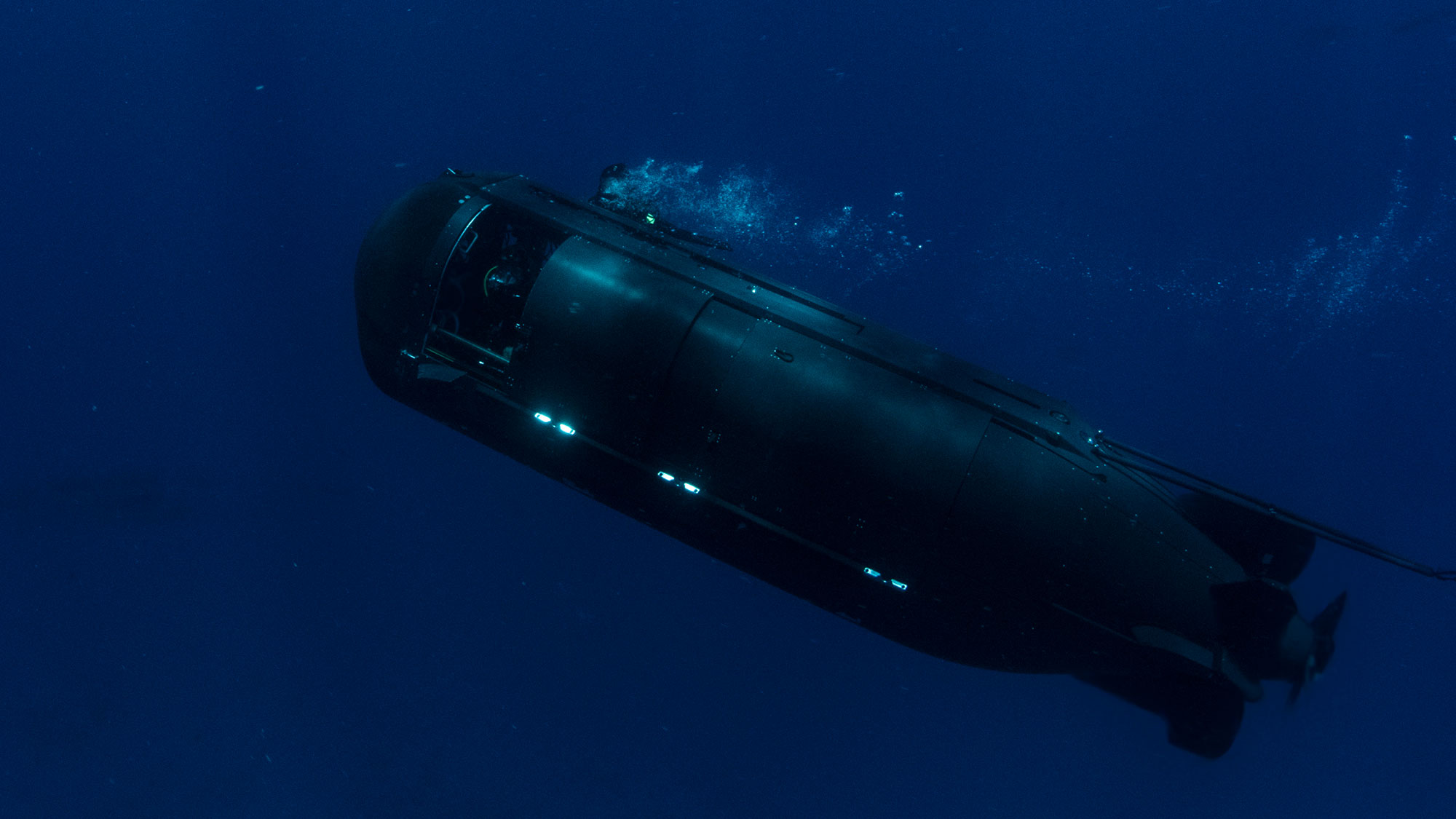

Navy SEALs have a well-earned reputation as an amphibious force. The special operations teams, whose acronym derives from “Sea, Air and Land,” are trained to operate from a range of vehicles, departing as needed to carry out missions through water, in the sky, or on the ground. When deploying covertly in the ocean, SEALs have for decades taken the SEAL Delivery Vehicle, a flooded transport in which the crew ride submerged and immersed in ocean water. Now, Special Operations Command says the new enclosed submarine—in other words, it’s dry inside—should be ready for operation before the end of May.
This new submarine, in contrast to the open-water SEAL Delivery Vehicle, is called the Dry Combat Submersible. It’s been in the works since at least 2016, and was designed as a replacement for a previous enclosed transport submarine, the Advanced SEAL Delivery System. This previous advanced sub, developed in the early 2000s, was canceled after a prototype caught fire in 2008. That, compounded by cost overruns in the program, halted development on the undersea vehicle. It also came at a time when SEALs were operating largely on land and through the air, as part of the increased operational tempo of the Iraq and Afghanistan wars.
But now, it appears to be full-steam ahead for the Dry Combat Submersible. The news was confirmed at the SOF [Special Operations Forces] Week conference in Tampa, Florida, which ran from May 8 through 11. The convention is a place for Special Operations Forces from across the military to talk shop, meet with vendors selling new and familiar tools, and gather as a chattering class of silent professionals. It is also, like the Army, Navy, and Air Force association conventions, a place for the military to announce news directly relevant to those communities.
“This morning we received an operational test report. So that means the Dry Combat Submersible is going to be operational by Memorial Day, and we’re coming to an end scenario,” John Conway, undersea program manager at SOCOM’s program executive office-maritime, said on May 10, as reported by National Defense Magazine.
The flooded submersible in use today allows four SEALs and two drivers, clad in wetsuits, to travel undetected under the surface of the water several miles. With just the driver and navigator, the craft can traverse 36 nautical miles at 4 knots, a journey taking nine hours. With the four SEALs, the distance is limited, not just by the weight of passengers and their gear, but by the conditions of the submersible itself.
“Because the SEALs are exposed to the environment water temperature can be a more limiting factor than battery capacity,” wrote Christopher J. Kelly, in a 1998 study of the submarine in joint operations.
When Lockheed Martin announced in 2016 that it would be manufacturing Dry Combat Submersibles, it offered no specifics on the vehicle other than that it would weigh more than 30 tons and be capable of launch from surface ships. (The current SEAL Delivery Vehicle is launched from larger submarines.) The Dry Combat Submersible, at announcement, promised “longer endurance and operate at greater depths than swimmer delivery vehicles (SDV) in use,” the ability to travel long distances underwater, and an overall setup that “allows the personnel to get closer to their destination before they enter the water, and be more effective upon arrival.”
Concept art for the vehicle showed a passenger capacity of at least nine, though it would still be a fairly compact ride. The S351 Nemesis, made by MSubs, who has partnered with Lockheed Martin on this project, and is the likely basis for the Dry Combat Submersible. As listed, the Nemesis has a capacity for eight passengers and one pilot. The nemesis can travel as far as 66 nautical miles, and do so at a speed of 5 knots, or make the journey in 13 hours.
Once in the Navy’s hands, the new submersible will ensure better starts to operations for SEALs, who can arrive at missions having only briefly donned wetsuits, instead of dealing with the fullness of the ocean for hours.
As the Pentagon shifts focus from terrestrial counter-insurgencies to the possibility of major power war, especially in and over the islands of the Pacific, the Dry Combat Submersible will expand how its SEALs can operate. It’s a lot of effort for a relatively small part of the overall military, but the precise application of specialized forces can have an outsized impact on the course of subsequent operations, from harbor clearing to covert action behind fortified lines.